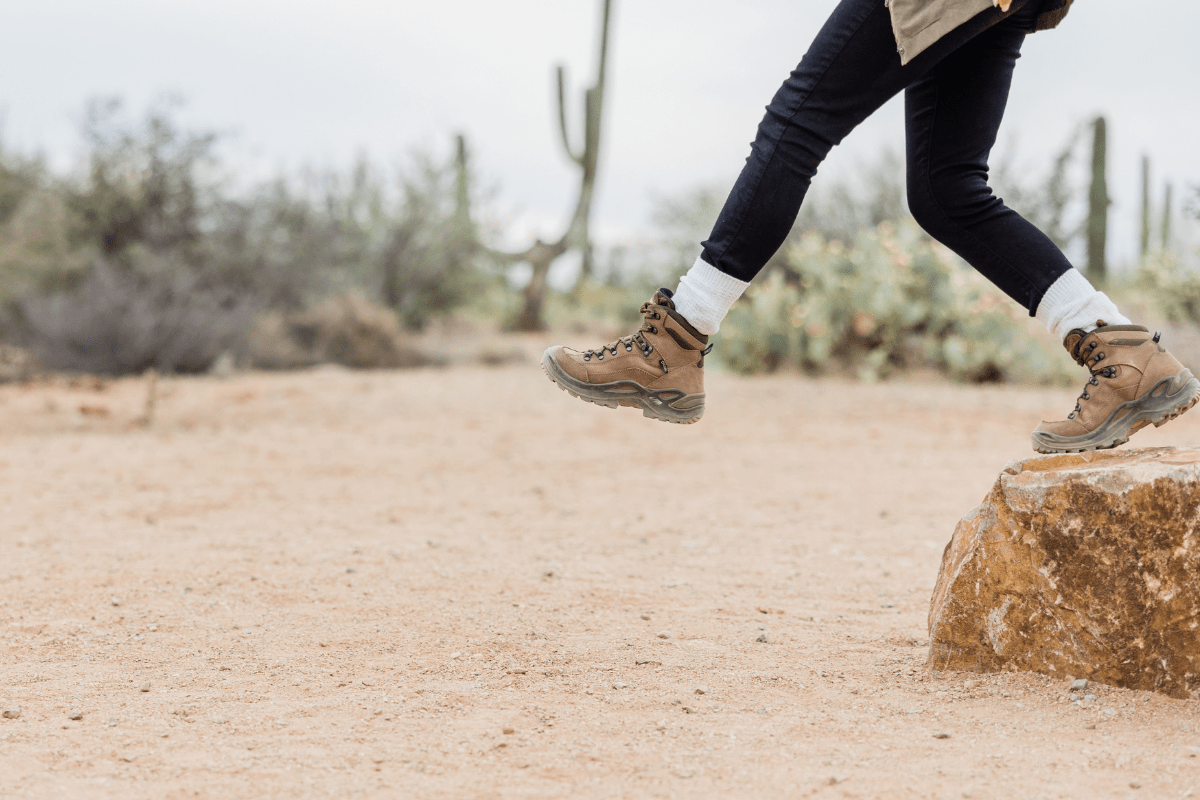Santa Fe is surrounded by a patchwork of wild foothills, pine forests, and sweeping vistas that make it a dream for hikers of all stripes. Whether you crave a quick jaunt along a scenic river path or a lung-busting climb into aspen-draped mountains, the trails here deliver fresh air with a side of adventure.
Let’s get to it.
Calabasas Trail Head (La Tierra Trails)
Tucked into Santa Fe’s northern outskirts, Calabasas Trail Head serves as the main gateway to the 25-mile La Tierra Trails network. Hikers, mountain bikers, and riders on horseback share the routes, most of which range from easy to moderate. A popular 9.5-mile loop starts here and climbs just under 1,000 feet, making it accessible for many skill levels.
The trail surface alternates between wide, sandy singletrack and occasional rocky sections that test your footing. On clear days you can spot the Jemez Mountains and even catch a glimpse of Los Alamos. Spring brings carpets of wildflowers, and birdwatchers often outnumber other trail users.
Parking is convenient in a large lot, and trail junctions are clearly numbered so you won’t wander off course. Facilities are minimal: there’s a porta-potty at the trailhead but no water, so carry your own supplies. Dogs are welcome on leash. If you hike midweek you’ll usually find fewer people, though summer storms or winter snow can change conditions quickly.
La Cuchara Trailhead (La Tierra Trails)
Serving as a busy entry point to the La Tierra Trails, La Cuchara Trailhead sits on Santa Fe’s high desert edge. Riders on horseback, mountain bikers, and hikers share the network, and leashed dogs are common companions. The main loop spans 5.9 miles but adding side trails creates longer routes.
Trail grades stay mostly easy to moderate, with gentle hills rather than steep ascents. Sandy tread sections alternate with rocky patches that remind you to watch your step. From points along the route, cityscapes blend into distant Sangre de Cristo peaks, while Jemez and Sandia Mountains hover on the horizon.
A mid-sized free parking lot fills up on weekends, and a kiosk map at the start helps you plan shortcuts or longer circuits. There are no restrooms or water stations out here, so carry essentials. Wayfinding markers at intersections keep you on track. Arriving early or visiting during the week brings quieter trails before the midday rush.
Dale Ball Trails – Sierra del Norte Trailhead
Stepping away from downtown traffic, the Sierra del Norte Trailhead links you to over 24 miles of Dale Ball Trails winding through Sangre de Cristo foothills. Routes range from easy to moderate, with enough climbing to satisfy hikers who want a workout. The North Loop spans just over three miles with about 334 feet of elevation gain, but adding connectors can extend your outing.
Trails consist of compacted dirt and occasional rocky patches underfoot. Piñon and juniper offer shade at midday, and benches placed at viewpoints let you focus on the valley below. On clear days you’ll see Sangre de Cristo summits and faint profiles of Jemez and Sandia ranges beyond the city.
Volunteers from the Santa Fe Conservation Trust keep trail markers and junction signs up to date, so navigation is straightforward. Parking is free but limited, especially in spring wildflower season and fall leaf change. Dogs on leash are welcome, though strollers are not recommended on the uneven ground.
Winsor Trailhead
Sitting at the north end of the Santa Fe ski area parking lot, Winsor Trailhead is the springboard into the Pecos Wilderness. You begin on a wide dirt path but soon switch to rocky singletrack, stream crossings, and a mix of aspen and pine. The trailhead itself is already at 10,350 feet, so it’s wise to acclimate before you set off.
Summer weekends see a steady stream of hikers, well-behaved dogs on leashes, and occasional horseback riders. Push past the first couple of miles and the crowd thins—unless wildflowers are in full bloom. USFS maintains the trail well, though you might step over a fallen log after the wilderness boundary.
Views open up quickly: Taos and Sandia peaks, wide meadows, creeks, and two small lakes framed by pine-scented air. Vault toilets and picnic tables sit near the parking area but there’s no water or snacks, so pack accordingly. Sunscreen is a must at this elevation to avoid burns that can outlast your sore legs.
RailTrail, Rabbit Road Trailhead
At Santa Fe’s RailTrail Rabbit Road Trailhead you find a true multi-use corridor. Hikers, runners, bikers, and even horseback riders share smooth pavement with scenic views of the Sangre de Cristo Mountains. The paved section from downtown out to Rabbit Road is flat, stroller- and wheelchair-friendly, and benches appear at regular intervals for quick breaks or rest stops. Past Rabbit Road the surface shifts to dirt, with occasional bumps and sandy patches after dramatic weather, yet it remains quite manageable.
Wildflowers bloom alongside piñon-juniper grasslands, and you might hear a distant train reminding you of the trail’s rail-spur past. Free parking at the trailhead simplifies your visit. Dogs are welcome on leash, and the route stays open year-round—waterproof boots help if it’s wet or icy. There are no restroom facilities here, so plan to return to the Railyard for those. Markers along the way show distances, and you can link this section to other segments of the larger network. Overall it offers a no-fee, low-drama taste of New Mexico landscape.
Cerro Gordo Trailhead (Dale Ball Trails)
For fresh mountain air and easy access, Cerro Gordo Trailhead on the Dale Ball Trails sits just north of Santa Fe. The main loop covers about 4.1 miles, but this trailhead links to longer routes if you feel ambitious. The singletrack surface mixes dirt and gravel with enough rocks to keep each step engaging. Elevation gain is around 750 feet, gentle enough for many hikers but still a solid workout.
Views alternate between the cityscape below and the Sangre de Cristo Mountains above, with piñon-juniper woodlands along the way. In spring and summer, wildflowers add splashes of color. A few benches provide rest sites. The trailhead offers a paved parking lot, a map kiosk, and pit toilets, though there is no water source, so carry what you need. Dogs on leash are welcome and you will see them here. Weekends and holidays bring more visitors. Weekdays or early starts deliver solitude. From November through March watch for snow or ice; otherwise the trails stay well-marked and maintained.
Chamisa Trailhead
Chamisa Trailhead lies at the edge of the Sangre de Cristo foothills, offering a 4.3-mile loop that climbs about 1,100 feet. The trail surface alternates between rocky dirt and fine gravel, so sturdy footwear is important. Ponderosa pines shade much of the route, and if you hike during late spring or early summer you will see wildflowers alongside the path. Stream crossings appear here and there, adding variety and a chance to cool off.
Trail maintenance is reliable and markers are easy to follow, making it simple to stay on course. Visitors will often spot leashed dogs, inquisitive chipmunks, and several picnic tables that invite a longer break. Amenities are basic: vault toilets wait at the trailhead, but there is no water supply. On weekends, parking fills quickly, especially in peak fall colors. Weekday mornings offer the best chance at an open spot. Chamisa proves a classic Santa Fe hike, balancing forest scenery with moderate challenge.
Arroyo Hondo Open Space Trail Head
Just south of Santa Fe, the Arroyo Hondo Open Space Trail Head provides a solid high-desert hike. The main loop is 1.8 miles, though you can extend the outing using a 1-mile spur or a 1.5-mile connector. Trails cross hard-packed dirt with occasional rocky patches and a handful of narrow stretches. With only 270 feet of climbing, this route feels gentle on most legs.
Scenic views reach across the Galisteo Basin to the Ortiz Mountains. Piñon and juniper trees offer spotty shade along the way. You may spot mule deer, small birds, and in spring or fall bursts of wildflowers. Benches at the overlooks invite snack breaks. Dogs are welcome on leash, and you’ll want to watch for cactus near the path. The free parking area is small, so arrive midweek or early to secure a spot. Vault toilets and wayfinding maps stand near the trailhead. Traffic noise from the nearby highway fades quickly once you head into the open space.
Atalaya – Lower Trailhead
Next to St. John’s College, Atalaya – Lower Trailhead is the most popular entry point for Santa Fe’s hill country. The parking lot fills up fast, especially on summer weekends. A vault toilet stands near the lot, but there is no drinking water. Plan ahead and pack extra fluids.
The trail itself climbs about 1,800 feet over rocky singletrack. It winds through classic piñon-juniper woods with loose dirt and scattered stones that keep each step interesting. Rules call for dogs to remain on leash, although some hikers allow off-leash runs in spots. As you gain altitude, the crowds thin and you can enjoy sweeping views of Santa Fe, the Sangre de Cristo Mountains, and the Jemez range. The trailhead features a signboard with maps and regulations. Trail markers are clear and maintenance is good, but the route is strenuous. Fall and spring offer comfortable temperatures, while summer afternoons can heat up quickly.
Diablo Canyon Recreation Area
Diablo Canyon Recreation Area offers towering basalt cliffs that loom overhead, creating a dramatic canyon setting. The main trail runs approximately 6 to 7.5 miles out and back, winding through a sandy, rocky wash. Hikers hop over boulders and navigate under tight canyon walls. Keep going and you’ll reach views of the Rio Grande. The elevation gain is roughly 350 feet, enough to feel it on your legs without turning into a full-on scramble. After storms the terrain can shift, so good hiking shoes are a must.
Trailhead access requires a high-clearance vehicle since the dirt road is rough on low sedans. Once you arrive, there’s a proper dirt parking area and a vault toilet, but don’t count on water, paper, or trash bins. Climbers claim many of the walls, but there is still room for day hikers and leashed dogs. Primitive camping feels quite remote here. Cooler months are best; summer temperatures can be intense. With just the sound of occasional birds and distant dogs, the quiet here feels like its own reward.
Dale Ball Trails
Covering nearly 25 miles of singletrack in the Sangre de Cristo foothills, Dale Ball Trails has become Santa Fe’s top spot for hiking, trail running, and mountain biking. Routes vary from gentle two-mile loops to challenging climbs that top out around 1,100 feet of elevation gain. The Main Loop is ideal for a quick outing, while connecting segments let you build a longer adventure.
Scenic overlooks dot the network, offering valley panoramas and colorful wildflowers each spring. Arrow plaques and detailed maps at intersections make navigation easy, even if you mix and match routes. Free parking is available at multiple trailheads, though lots near main access points fill up on weekends. Keep walking and crowds thin out.
Trails wind under piñon and juniper canopies, and occasional rocky patches test your balance. Dogs are welcome on leash. In winter, traction devices can help on icy sections. With no water or restrooms on the trails, pack supplies before you go and plan your return before afternoon storms roll in.
Frenchy’s Field/Santa Fe River Trail
For a flat, accessible stroll, head to Frenchy’s Field along the Santa Fe River. The main loop spans about three miles of smooth pavement with almost no elevation change. This makes it ideal for strollers and wheelchairs. You’ll walk beside the river, spot spring wildflowers, and catch intermittent views of the Sangre de Cristo Mountains. Free parking and ADA-compliant paths ensure easy access for all.
Playgrounds with swings and slides welcome families, while public grills support casual cookouts. Exercise stations with pull-up bars and dip stations invite a quick workout. Benches line the path for rest, and a small stone labyrinth offers a quiet diversion. Dogs on leash join walkers, and you might glimpse a prairie dog peering from its burrow. Restrooms open periodically, and park staff keep the grounds tidy unless weeds get ambitious. Overall, this trail provides a relaxed setting for a brisk walk or leisurely afternoon without any steep hills.




